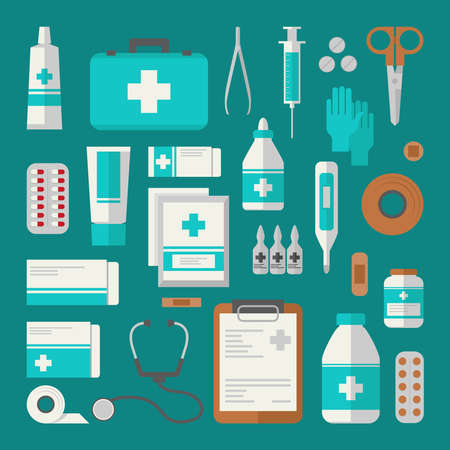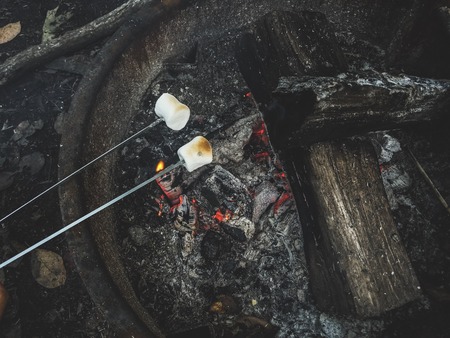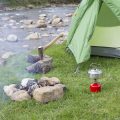Recognizing Common Camp Emergencies
When sending your child to camp, it’s important for families to be aware of the most common medical emergencies that can happen in an outdoor environment. Camps are full of adventure, but they also come with risks like allergic reactions—especially from insect stings or unknown foods—cuts and scrapes from active play, sprains from hiking or sports, dehydration from long hours outside, and heat exhaustion during those hot summer days. Recognizing these typical issues is the first step in preparing your family for a safe camp experience. Being able to identify symptoms early, such as swelling or hives for allergies, limping or pain for sprains, dizziness and thirst for dehydration, or fatigue and heavy sweating for heat exhaustion, can make a big difference in how quickly and effectively you respond. Understanding these common situations sets the foundation for building your family’s first aid readiness before camp even begins.
2. Building a Family First Aid Kit
When you’re preparing for a family camping trip, having a well-stocked first aid kit is essential for handling unexpected bumps, scrapes, or more serious medical emergencies. Not only should your kit include basic supplies, but it’s also important to consider the unique needs of your family—especially if anyone has allergies, asthma, or other health conditions. Here’s how to put together a comprehensive first aid kit that’s ready for anything camp life might throw your way.
Essentials to Pack for Camp
Your first aid kit should be compact yet complete. Below is a handy checklist of items every family should pack before heading out:
| Category | Items to Include |
|---|---|
| Basic Supplies | Adhesive bandages (various sizes), sterile gauze pads, adhesive tape, antiseptic wipes, tweezers, scissors, safety pins, disposable gloves, cotton balls/swabs |
| Medications | Pain relievers (acetaminophen/ibuprofen), antihistamines for allergies, hydrocortisone cream for rashes, antibiotic ointment, anti-diarrheal tablets, antacids, children’s medications if needed |
| Specialty Items | EpiPen (for severe allergies), inhaler (asthma), glucose tablets (diabetes), personal prescription meds with extra doses, backup glasses/contact lenses and solution |
| Other Essentials | Thermometer, instant cold packs, emergency blanket, insect sting relief pads, sunscreen, aloe gel for burns |
Consider Known Conditions and Allergies
If any family member has a specific medical condition—like diabetes or severe allergies—include enough specialty supplies for the entire trip plus extras in case of loss or contamination. Clearly label these items and make sure everyone knows where they are in the kit.
Pro Tips for American Campsites
Remember that some campsites in the U.S. may be far from medical help. Having your own supplies could make all the difference in an emergency. Double-check expiration dates on medications and replace anything that’s expired before each trip.

3. Establishing Emergency Plans
When your child heads off to camp, having a solid emergency plan is just as important as packing the right gear. Families should take proactive steps to ensure everyone knows what to do if a medical emergency arises. Start by developing clear communication strategies with both your camper and the camp staff. Make sure your child understands how to reach out for help and who their trusted adults are at camp.
Setting Up Emergency Contacts
Compile a list of key emergency contacts, including parents or guardians, backup relatives, family doctors, and any specialists relevant to your childs health needs. Share this list with the camp and double-check that all phone numbers are up-to-date and accessible. Consider giving your child a card with these contacts in their backpack for easy access.
Customizing Response Plans
Every family’s needs are different, so tailor response plans to fit your camper’s unique health concerns—whether it’s allergies, asthma, or chronic conditions. Discuss with camp staff how emergencies related to these issues will be handled, such as where medication is stored and who can administer it. If needed, provide written instructions for specific scenarios.
Practicing and Reviewing Plans
Before camp begins, rehearse your emergency plan with your child so they feel confident about what actions to take. Encourage open conversations about safety and remind them that asking for help is always okay. By establishing thorough emergency plans ahead of time, families can send their campers off with greater peace of mind—knowing they’re prepared for whatever comes their way.
4. Teaching Kids Basic First Aid Skills
When preparing your family for a safe camp experience, teaching kids basic first aid skills is essential. Children who know how to recognize and respond to common injuries not only become more confident but also help make camp safer for everyone. Its important to use age-appropriate methods so that kids understand what to do without feeling overwhelmed.
Recognizing Common Injuries
Start by helping your child identify simple injuries they might encounter at camp, like cuts, scrapes, burns, or insect bites. Use clear language and real-life examples to demonstrate what each injury looks like. A helpful way to teach these concepts is with a simple table:
| Injury Type | What It Looks Like | What To Do |
|---|---|---|
| Cut/Scrape | Bleeding, red skin, open wound | Clean with water, apply bandage |
| Burn | Redness, swelling, blistering | Cool with water, tell an adult |
| Bee Sting/Insect Bite | Red bump, possible stinger left in skin | Remove stinger if present, apply ice, watch for allergies |
Age-Appropriate First Aid Tips
- Ages 4-7: Teach them basic safety rules—like not touching sharp objects or unknown plants—and encourage them to always ask an adult for help when someone gets hurt.
- Ages 8-12: Show them how to clean minor wounds with soap and water and apply a bandage. Practice making an emergency call (911) and role-play scenarios where they need to get an adult’s attention quickly.
Role-Playing Scenarios
Create fun drills where kids practice responding to pretend injuries using their first aid kit. For example: “You see your friend trip and scrape their knee—what do you do?” This builds confidence and helps reinforce their new skills.
Knowing When to Get Adult Help
The most important lesson is teaching children when it’s time to involve an adult or call for emergency services. Let them know that if someone is seriously hurt (won’t stop bleeding, can’t breathe, or is unconscious), they should find the nearest grown-up immediately or dial 911 if possible.
By practicing these age-appropriate first aid lessons before heading out on your camping adventure, you empower your child to act quickly and safely during medical emergencies—making camp a positive experience for the whole family.
5. When to Call for Professional Help
Knowing when to seek professional medical assistance is a critical part of camp safety for families. While many minor injuries and illnesses can be handled with basic first aid, there are situations where reaching out for help is essential. Here’s how to decide whether to consult camp staff, call 911, or go to the nearest urgent care or emergency room.
Consulting Camp Staff First
If your child experiences a non-life-threatening issue—such as mild allergic reactions, minor cuts, sprains, or headaches—the first step is to notify the camp staff. Most camps have trained personnel who can assess and provide appropriate care. These professionals are equipped with first aid kits and protocols, and they’ll know when an incident needs to be escalated.
When to Use 911
Call 911 immediately if your child or anyone at camp experiences any of the following:
- Difficulty breathing or shortness of breath
- Severe allergic reactions (anaphylaxis), especially if an EpiPen has been used
- Unconsciousness or unresponsiveness
- Heavy bleeding that won’t stop with pressure
- Suspected broken bones with visible deformity
- Seizures lasting more than five minutes
- Signs of stroke (sudden numbness, confusion, trouble speaking)
The dispatcher can provide instructions while help is on the way. Remember, when in doubt about a life-threatening situation, always err on the side of caution and call for emergency services.
Urgent Care vs. Emergency Room
If the injury or illness is not immediately life-threatening but still requires prompt attention—like a deep cut needing stitches, a possible broken bone without major deformity, high fever, or a painful ear infection—consider heading to urgent care. Urgent care clinics are typically faster and more cost-effective for these kinds of issues compared to hospital ERs.
Emergency Room Visits
The ER should be reserved for serious conditions such as severe head injuries, suspected poisoning, chest pain, severe abdominal pain, or anything that could rapidly worsen. If you’re unsure whether urgent care or the ER is appropriate, call ahead and describe the symptoms for guidance.
Trust Your Instincts
No one knows your child like you do. If something feels seriously wrong—even if it doesn’t fit neatly into any category—don’t hesitate to reach out for help. Quick action can make all the difference in an emergency situation.
6. Managing Special Medical Needs
When preparing for camp, families with children who have allergies, asthma, diabetes, or other chronic conditions need to take extra steps to ensure a safe and fun experience. Open communication and careful planning can make all the difference in managing special medical needs at camp.
Communicate Clearly With Camp Staff
Before your child heads off to camp, be sure to share all relevant medical information with camp staff. This includes providing up-to-date details about your child’s condition, medications, triggers, and emergency action plans. Don’t assume that all camps have a nurse on-site—be explicit about what your child may need if a medical issue arises.
Create an Emergency Action Plan
Work with your healthcare provider to create a written emergency action plan specific to your child’s needs. Give copies of this plan to the camp director and any counselors who will be responsible for your child. Make sure it includes clear instructions on recognizing symptoms and responding to emergencies like allergic reactions, asthma attacks, or low blood sugar.
Pack Medications and Supplies Properly
Send your child to camp with enough medication to last longer than their stay, in original labeled containers. Include extras such as inhalers, EpiPens, glucose tablets, or insulin supplies. Teach your child how—and when—to use these items if they are old enough. Also check that the camp is prepared to store medications appropriately (like refrigeration for insulin).
Empower Your Child
If age-appropriate, educate your child about their condition and encourage them to speak up if they don’t feel well or need help. Role-play scenarios so they feel comfortable telling an adult about symptoms or asking for their medication.
Double-Check Camp Policies
Ask about the camp’s experience handling chronic conditions and what training staff receive. Find out how emergencies are handled and whether there is quick access to local medical facilities. Clarify policies on carrying medications—some camps require them to be stored centrally, while others allow older campers to carry their own rescue meds.
Staying Connected
Finally, provide up-to-date contact information so you can be reached quickly if needed. By taking these proactive steps, you’ll help ensure that your child has the support they need for a safe and enjoyable camp experience—even with special medical needs.


